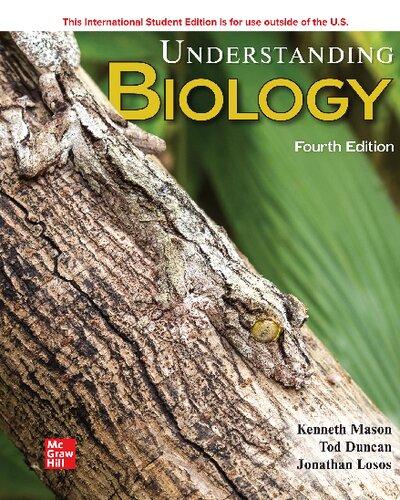
https://ebookmass.com/product/geometric-modeling-of-fractal-

Instant digital products (PDF, ePub, MOBI) ready for you
Download now and discover formats that fit your needs...
Fractal Noise Christopher Paolini
https://ebookmass.com/product/fractal-noise-christopher-paolini/
ebookmass.com
Fractal Noise Christopher Paolini
https://ebookmass.com/product/fractal-noise-christopher-paolini-2/
ebookmass.com
The Forms of Michael Field Palgrave
https://ebookmass.com/product/the-forms-of-michael-field-palgrave/ ebookmass.com
Albemarle Street: Portraits, Personalities and Presentations at The Royal Institution 1st Edition John Meurig Thomas
https://ebookmass.com/product/albemarle-street-portraitspersonalities-and-presentations-at-the-royal-institution-1st-editionjohn-meurig-thomas/ ebookmass.com




Understanding Biology 4th Edition Kenneth Mason
https://ebookmass.com/product/understanding-biology-4th-editionkenneth-mason/
ebookmass.com
John Henry Newman and the English Sensibility: Distant Scene Jacob Phillips (Editor)
https://ebookmass.com/product/john-henry-newman-and-the-englishsensibility-distant-scene-jacob-phillips-editor/
ebookmass.com
European Disintegration: A Search for Explanations 1st ed. Edition Hans Vollaard
https://ebookmass.com/product/european-disintegration-a-search-forexplanations-1st-ed-edition-hans-vollaard/
ebookmass.com
ISE International Business: Competing in the Global Marketplace 13th Edition Charles Hill
https://ebookmass.com/product/ise-international-business-competing-inthe-global-marketplace-13th-edition-charles-hill/
ebookmass.com
Deceitful Media: Artificial Intelligence and Social Life
After the Turing Test Simone Natale
https://ebookmass.com/product/deceitful-media-artificial-intelligenceand-social-life-after-the-turing-test-simone-natale/
ebookmass.com





NATO at 70: A Political Economy Perspective 1st ed.
Edition Keith Hartley
https://ebookmass.com/product/nato-at-70-a-political-economyperspective-1st-ed-edition-keith-hartley/
ebookmass.com


Geometric Modeling of Fractal Forms for CAD
Geometric
Geometric Modeling
Forms
First published 2021 in Great Britain and the United States by ISTE Ltd and John Wiley & Sons, Inc.
Apart from any fair dealing for the purposes of research or private study, or criticism or review, as permitted under the Copyright, Designs and Patents Act 1988, this publication may only be reproduced, stored or transmitted, in any form or by any means, with the prior permission in writing of the publishers, or in the case of reprographic reproduction in accordance with the terms and licenses issued by the CLA. Enquiries concerning reproduction outside these terms should be sent to the publishers at the undermentioned address:
ISTE Ltd
John Wiley & Sons, Inc.
27-37 St George’s Road 111 River Street London SW19 4EU Hoboken, NJ 07030
UK USA
www.iste.co.uk
www.wiley.com
© ISTE Ltd 2021
The rights of Christian Gentil, Gilles Gouaty and Dmitry Sokolov to be identified as the authors of this work have been asserted by them in accordance with the Copyright, Designs and Patents Act 1988.
Library of Congress Control Number: 2021932086
British Library Cataloguing-in-Publication Data
A CIP record for this book is available from the British Library
ISBN 978-1-78630-040-9
Preface
Chapter1.TheBC-IFSModel
1.1.Self-similarityandIFS...........................1
1.1.1.Mathematicaldefinitionsandreminders................4
1.1.2.Self-similarity..............................8
1.1.3.Examples.................................9
1.1.4.Iteratedfunctionsystems........................15
1.1.5.Visualizationandapproximation....................18
1.1.6.Computerimplementation.......................19
1.1.7.Notionsofaddressandparameterization...............23
1.1.8.Finiteaddress..............................25
1.1.9.IFSmorphisms..............................25
1.1.10.Exampleofacurve...........................27
1.1.11.TheexampleoftheSierpinskitriangle................28
1.2.Controllediteratedfunctionsystem....................30
1.2.1.Formalization..............................35
1.2.2.Visualizationandapproximation....................36
1.2.3.Implementation.............................37
1.3.Boundarycontrollediteratedfunctionsystem..............38
1.3.1.Attractorsdefinedfromasetofcontrolpoints............43
1.3.2.Formulation...............................44
1.3.3.Evaluation................................50
1.3.4.Implementation.............................51
1.3.5.Topologycontrol.............................51
1.3.6.Formulation...............................60
1.3.7.Evaluationtreeandquotientgraph...................62
1.3.8.Constraintresolution..........................64
1.3.9.Implementation.............................75
1.3.10.Controlofthelocaltopology.....................77
1.3.11.Principle.................................78
1.3.12.Implementation.............................81
1.3.13.Choiceofthedisplayprimitive....................82
1.3.14.Choiceofdimension..........................83
1.3.15.Choiceofgeometry..........................83
1.3.16.Primitiveproperty...........................84 1.3.17.BC-IFS.................................84
Chapter2.DesignExamples ..........................87
2.1.Curves....................................87
2.2.Wiredstructures...............................93
2.3.Surfacesandlaces..............................95
2.3.1.Quadrangularsubdivisions.......................98
2.3.2.Triangularsubdivisions.........................106
2.3.3.Otherregularpolygonalsubdivisions.................109
2.3.4.TheSierpinskitriangle.........................109
2.3.5.Penrosetilings..............................115
2.4.Volumesandlacunarobjects........................116
2.5.Treestructures................................118
2.5.1.Basicexample..............................118
2.5.2.Basicexamplewithanundividedtrunk................120
2.5.3.Examplebytilingthespace......................122
2.6.Formassembly................................125
Chapter3.SurfaceNURBS,SubdivisionSurfacesandBC-IFS ...129
3.1.Beziercurvesandsurfaces.........................130
3.2.UniformB-splinecurvesandsurfaces...................132
3.3.Generalization................................134
3.3.1.Polynomialcurves............................134
3.3.2.Rationalcurves.............................135
3.4.NURBScurves................................135
3.4.1.Knot-doubling..............................136
3.4.2.Curvesubdivision............................138
3.4.3.Surfacesubdivision...........................150
3.5.Subdivisioncurvesandsurfaces......................151
3.5.1.Subdivisioncurves............................154
3.5.2.Subdivisionsurfaces...........................157
Chapter4.BuildingOperations,AssistancetoDesign andApplications ..................................167
4.1.Topologicalconsistencyandsymmetryconstraints...........168
4.1.1.Orientationconstraints.........................168
4.1.2.Permutationoperatorsandsymmetryconstraints...........170
4.2.Topologicalcombination..........................179
4.2.1.Topologicaltensorproduct.......................179
4.2.2.Exampleofsurfacegenerationfromcurves..............184
4.2.3.Volumegenerationsfromcurves....................188
4.2.4.Generationofthetreestructure....................188
4.3.Applications.................................193
4.3.1.Interactionbetweenrepresentationmodels..............193
4.3.2.Structureoptimization..........................195
4.3.3.Roughnessandspacerefilling.....................208
4.3.4.Thedesignofaheatexchanger.....................210
Preface
Thisworkintroducesamodelofgeometricrepresentationfordescribingand manipulatingcomplexnon-standardshapessuchasroughsurfacesorporous volumes.Itisaimedatstudentsinscientificeducation(mathematicians,computer scientists,physicists,etc.),engineers,researchersoranyonefamiliarwiththe mathematicalconceptsaddressedatearlystagesofthegraduatelevel.However, manypartsareaccessibletoall,inparticular,allintroductorysectionsthatpresent ideaswithexamples.Peoplewithnopriorbackground,whethertheyareartists, designersorsimplycurious,willbeabletounderstandthephilosophyofour approach,anddiscoveranewuniverseofunsuspectedandexcitingforms.
Geometricrepresentationmodelsaremathematicaltoolsintegratedinto computer-aidedgeometricdesign(CAGD)software.Theymaketheproductionof numericalrepresentationsofformspossible.Bymeansofgraphicalinterfacesor programmingtools,userscandrawand/ormanipulatetheseshapes.Theycanalso testorevaluatetheirphysicalproperties(mechanical,electro-magnetic,acoustic,etc.) bycommunicatinggeometricdescriptionstofurtherspecificnumericalsimulation software.
Thegeometricrepresentationmodelwepresenthereisbasedonthefractal geometryparadigm.Theprinciplebehindthisconsistsofstudyingtheproperties (signal,geometry,phenomena,etc.)atdifferentscalesandidentifyingtheinvariants fromthere.Theobjectsaredescribedasself-referentialbetweentwoscales:eachof theobjectfeatures(namely,thelowerscalelevel)isdescribedasareferencetothe objectitself(namely,thehigherscale).Thisapproachisnotconventionalandoften confusingatfirst.Wecometoperceiveitsrichnessandpowerveryquickly,however. Theuniverseofformsthatcanpossiblybecreatedisinfiniteandhasstillonly partiallybeenexplored.
Inthisbook,wepresentthemathematicalfoundations,sothatthereadercan accessalltheinformationtounderstand,testandmakeuseofthismodel.Properties,
theoremsandconstructionmethodsaresupplementedwithalgorithmsandnumerous examplesandillustrations.Concerningtheformalization,wehavechosentouse preciseandrigorousmathematicalnotationstoremoveanyambiguityandmake understandingeasier.
Readersunwillingtobeconcernedwithmathematicalformalismscangettogrips withthephilosophyofourapproachbyfocusingonthesectionsfoundatthe beginningsofthechapters,inwhichideasandprinciplesareintuitivelypresented, basedonexamples.
Thisbookistheresultof25yearsofresearchcarriedoutmainlyintheLIRIS laboratoriesoftheUniversityofLyonIandLIBoftheUniversityofBurgundy Franche-Comté.ThisresearchwasinitiatedbyEricTosan,whowasinstrumentalat theoriginofthisformalismandtowhomwededicatethiswork.
ChristianG ENTIL GillesG OUATY DmitryS OKOLOV
February2021
I.1.Fractalsforindustry:whatfor?
Thisbookshowsourfirststepstowardthefundamentalandappliedaspectsof geometricmodeling.Thisareaofresearchaddressestheacquisition,analysisand optimizationofthenumericalrepresentationof3Dobjects.

a)3Dmodel

b)3Dprinting
FigureI.1. 3Dtreebuiltbyiterativemodeling(source: projectMODITEREno.ANR-09-COSI-014)
FigureI.1showsanexampleofastructurethatadmitshighverticalloads,while minimizingthetransferofheatbetweenthetopandbottomofthepart.Additive manufacturing(3Dprinting)allows,forthefirsttime,thecreationofsuchcomplex objects,eveninmetal(herewithahigh-endlaserprinterEOSM270).Thistypeof technologywillhaveahighsocietalandeconomicimpact,enablingbettersystemsto becreated(engines,cars,airplanes,etc.),designedandadaptednumericallyfor optimalfunctionality,thusconsuminglessrawmaterial,fortheirmanufacturing,and energy,whenused.
Currentcomputer-aideddesignis,however,notwellsuitedtothegenerationof suchtypesofobjects.Forcenturies,formillennia,humanityhasproducedgoodswith axes,files(orothersharporplaningtools),byremovingbitsfromapieceofwoodor plastic.Toolssubsequentlyevolvedintocomplexnumericalmillingmachines. However,atnopointduringthesemanufacturingprocessesdidweneedsuddenstops orpermanentchangesinthedirectionofthecuttingtool.Thepatternswerealways “regular”,hencethedevelopmentofmathematicsspecifictotheseproblemsandour excellentknowledgeofthemodelingofsmoothobjects.Thisiswhyitwasnecessary towaituntilthe20thcenturytohavethemathematicalknowledgeneededtomodel roughsurfacesorporousstructures:wewerejustnotabletoproducethemearlier.
Thus,sincethedevelopmentofcomputersinthe1950s,computer-aidedgeometric design(CAGDorCAD)softwarehasbeendevelopedtorepresentgeometricshapes intendedtobemanufacturedbystandardmanufacturingprocesses.Theseprocesses areasfollows:
–subtractivemanufacturing,usingmachinetoolssuchaslathesormilling machines;
–molding,wheremoldsthemselvesaremadeusingmachinetools; –deformation-basedmanufacturing:stampingorswaging(butagain,diesare usuallymanufacturedusingmachinetools),folding,etc.; –cutting,etc.
Eachoftheseprocessesimposesconstraints,forexample,concerningcollision issuesinmillingmachines(evenafive-axismillcannotproduceanygeometry). Thesemanufacturingprocessesinevitablyinfluencedthewaywedesignthe geometriesofobjects,inordertoactuallymanufacturethem.Forexample,CAD softwarehasintegratedthesedesignmethodologiesbydevelopingappropriate numericalmodelsortools.Currently,mostCADsoftwareprogramsarebasedonthe representationofshapesbymeansofsurfacesdefiningtheiredges.Thesesurfaces areusuallydescribedusingaparametricrepresentationcallednon-uniformrational B-spline(NURBS).Thesesurfacemodelsareverypowerfulandverypractical.Itis possibletorepresentanyvolumeenclosedbyaquadric(cylinders,cones,spheres, etc.)andcomplexshapes,suchascarbodiesorairplanewings.Theywereoriginally designedforthis.
However,theemergenceofadditivemanufacturingtechniqueshascausedan upheavalinthisarea,openingupthepossibilityofpotentially“manufacturable” forms.Byremovingthefootprintconstraintofthetool,itthenbecomespossibleto produceverycomplexshapeswithgapsorporosity.Thesenewtechniqueshave calledintoquestionthewayobjectsaredesigned.Newtypesofobjects,suchas porousobjectsorroughsurfaces,canhavemanyadvantages,duetotheirspecific physicalproperties.Fractalstructuresareusedinnumerousfieldssuchas
architecture(RianandSassone2014),jewelry(Soo etal.2006),heatandmass transport(Pence2010),antennas(Puente etal.1996;Cohen1997)andacoustic absorption(Sapoval etal.1997).
I.2.Fractalsforindustry:how?
Theemergenceoftechniquessuchas3Dprintersallowsfornewpossibilitiesthat arenotyetusedorareevenunexplored.Differentmathematicalmodelsandalgorithms havebeendevelopedtogeneratefractals.Wecancategorizethemintothreefamilies, asfollows:
–thefirstgroupsalgorithmsforcalculatingtheattractionbasinsofagiven function.JuliaandMandelbrot(PeitgenandRichter1986)ortheMandelbulb(Aron 2009)setsarejustafewexamples;
–thesecondisbasedonthesimulationofphenomenasuchaspercolationor diffusion(Falconer1990);
–thelastcorrespondstodeterministicorprobabilisticalgorithmsormodels basedontheself-similaritypropertyassociatedwithfractalssuchastheterrain generator(Zhou etal.2007),theiteratedfunctionsystem(Barnsley etal.2008)or theL-system(PrusinkiewiczandLindenmayer1990).
Inthelatterfamilyofmethods,shapesaregeneratedfromrewritingrules,making itpossibletocontrolthegeometry.Nevertheless,mostofthesemodelshavebeen developedforimagesynthesis,withnoconcernsfor“manufacturability”,orhavebeen developedforveryspecificapplications,suchaswoodmodeling(Terraz etal.2009). Somestudiesapproachthisaspectforapplicationsspecificto3Dprinters(Soo etal. 2006).In(BarnsleyandVince2013b),Barnsleydefinesfractalhomeomorphismsof [0, 1]2 ontothemodelingspace [0, 1]2 .Thesameapproachisusedin3Dtobuild3D fractals.Astandard3Dobjectisintegratedinto [0, 1]3 andthentransformedintoa3D fractalobject.Thisapproachpreservesthetopologyoftheoriginalobject,whichisan importantpointfor“manufacturability”.
Themaindifficultyassociatedwithtraditionalmethodsforgeneratingfractalslies incontrollingtheforms.Forexample,itisdifficulttoobtainthedesiredshapeusing thefractalhomeomorphismsystemproposedbyBarnsley.Here,wedevelopa modelingsystemofanewtypebasedontheprinciplesofexistingCADsoftware, whileexpandingtheircapabilitiesandareasofapplication.Thisnewmodeling systemoffersdesigners(engineersinindustry)andcreators(visualartists,designers, architects,etc.)newopportunitiestoquicklydesignandproduceamodel,prototype oruniqueobject.Ourapproachconsistsofexpandingthepossibilitiesofastandard CADsystembyincludingfractalshapes,whilepreservingeaseofuseforendusers.
Weproposeaformalismbasedonstandarditeratedfunctionsystems(IFS) enhancedbytheconceptofboundaryrepresentation(B-rep).Thismakesitpossible
toseparatethetopologyofthefinalformsfromthegeometrictexture,whichgreatly simplifiesthedesignprocess.Thisapproachispowerful,anditgeneralizes subdivisioncurvesandstandardsurfaces(linear,stationary),allowingforadditional control.Forexample,wehavebeenabletoproposeamethodforconnectingaprimal subdivisionschemesurfacewithadualsubdivisionschemesurface(Podkorytov etal.2014),whichisadifficultsubjectforthestandardsubdivisionapproach.
Thefirstchapterrecallsthenotionofself-similarity,intimatelylinkedtothatof fractality.WepresenttheIFS,formalizingthispropertyofself-similarity.Wethen introduceenhancementsintothismodel:controllediteratedfunctionsystems(C-IFS) andboundarycontrollediteratedfunctionsystems(BC-IFS).Thesecondchapteris devotedtoexamples.Itprovidesanoverviewofthepossibilitiesofdescriptionand modelingofBC-IFS,butalsoallowsbetterunderstandingtheprincipleofthemodel throughexamples.ThethirdchapterpresentsthelinkbetweenBC-IFS,the NURBSsurfacemodelandsubdivisionsurfaces.Theresultspresentedinthischapter areimportantbecausetheyshowthatthesesurfacemodelsarespecificcasesof BC-IFS.Thisallowsthemtobemanipulatedwiththesameformalismandtomake theminteractbybuilding,forexample,junctionsbetweentwosurfacesofanykind. Inthefourthchapter,weoutlinedesigntoolsthatfacilitatethedescriptionprocess,as wellasexamplesoftheapplications,ofthedesignofporousvolumesandrough surfaces.
Inthischapter,insection1.1,webeginbyintuitivelyintroducingthenotionof self-similarity.Then,insection1.1.2,wegiveitsmathematicalformulationas proposedbyHutchinson(Hutchinson1981)usingiteratedfunctionsystems(IFS). Next,wepresenthowthismathematicalmodelcanbeimplementedtocalculateand visualizegeometricshapes.
Insection1.2,wesetoutanextensionoftheIFS,allowingustomoveawayfrom strictself-similarityandgeneratealargerfamilyofforms.Thisextensioniscalleda controllediteratedfunctionsystem (C-IFS).
Finally,thefinalstepinformalizationistoenhancetheC-IFSmodelwiththe notionofboundaryrepresentation(B-rep).Thisstepisfundamentalbecauseitwill makeitpossibletodescribeandcontrolthetopologyoffractalforms.
1.1.Self-similarityandIFS
Inthisbook,whenwetalkaboutfractalshapes,fractalobjectsorsimplyfractals, itisinthesenseofself-similarobjects.
Therearedifferentdefinitionsofself-similarity.Forexample,inthefieldof imageprocessing,animageisconsideredself-similarwhencertainpartsofthat imageareidenticalto(or“lookalike”)otherparts.Thispropertyisexploited,in particular,by inpainting,atechniquethatconsistsofreconstructingpartofa damagedordeliberatelysubtractedimage(forexample,toeraseacharacter).The propertyofself-similarityisoftenverifiedwithnaturalimages,whichiswhy inpainting algorithmsaresosuccessful.Theprincipleistolookforanareasimilarto theareathatneedstobefilledin,andcopyitoverthemissingarea.
Infractalgeometry,ithasadifferentmeaning.
D EFINITION .– Anobjectiscalledself-similarifitiscomposedofcopiesofitself.
Thisdefinitionisnotrigorousandfurtherclarificationhastobeprovided. Nonetheless,itcontainsthemainidea.Ratherthandescribingthecomplexstructure ofanobject,wedescribeitspartsusingareferencetotheobjectitself.Itistherefore aself-referentialorrecursivedefinition.
Forexample,wecandescribethestructureofatreeasbeingcomposedofseveral parts:itsmainbranches(seeFigure1.1).Eachofitspartscanbeconsideredasa smallertree.

Figure1.1. Schematicillustrationofself-similarity.Theblacktreecan beseenasacompositionoftwotrees(ingreenandred).Foracolor versionofthisfigure,seewww.iste.co.uk/gentil/geometric.zip
Inthisexample,weunderstandhowacomplexshape,suchasthatofatree,can besimplydescribed.Self-similarityprovidesinformationaboutthestructureofthe objectwithadifferentapproachfromthatofstandardgeometricrepresentations.By referringtothepartsoftheobject,westudythedetailsoftheshape,inotherwords weperformachangeofscale.Eachdetailisthendescribedaccordingtotheobject itself,namelyasifthedetail“lookedlike”areducedversionoftheobject.Thetree ismadeupofbranches.Eachbranchisdefinedasatree.Wecanthenapplythereto thedefinitionofthetree:itisacompositionofbranches.Thisreasoningcanthenbe indefinitelyiterated.
Fromthisdefinitionandthisintroductoryexample,anumberofquestions immediatelyarise:
–Isthisdescriptionrelevant?
–Whichobjectsareself-similar?
–Whatdoesitmeanwhenadetail“lookslike”theobject?
–Istheshapeofanobjectcompletelydeterminedfromitsself-similarity?
–Knowingtheself-similarityproperty,isitpossibletoreproduceitsshape?
–Cananobjectpossessdifferentself-similarities?
Inordertobetterunderstandtheself-similaritypropertyandprovideanearly answertosomeofthesequestions,wearegoingtoconsiderasecondexample. Howeverthistime,westartfromanobjectwhoseshapeisnot apriori known,butits self-similaritypropertyis.Assumethatthisobjectconsistsoffivemainparts,eachof whichisanexactcopyoftheobjectonasmallerscale.
TheleftpartofFigure1.2showseachpart,symbolizedbyanarbitrarilychosen shape,asquareinthiscase.Inthisillustration,eachpartisnotidenticaltotheoverall structure.Tomeetthedefinitionofself-similarity,weneedtoreplaceeachpartwith theoverallcompositestructureofthefiveforms.Wethusobtaintheimageinthe centerofFigure1.2.However,byaddingdetailstothedetails,wehavealsoadded detailstotheoverallstructurethatwerenotinitiallypresent.Thereisalwaysa discrepancybetweenthedetailsoftheoverallformandthedetailsofeachpart.By iteratingthisconstructiontoreducethisdiscrepancy,thesameeffectwillthenbe observed.Consistencybetweentheobjectandeachofitspartscanonlybeachieved iftheprocessisappliedaninfinitenumberoftimestoobtainaresultliketheimage ontheright
Figure1.2. Anexampleofaself-similarobjectcomposedoffivecopiesofitself.These fivemainpartsaresymbolizedontheleftbythefivesquares.Inthecenter,eachsquare hasbeenreplacedbytheoverallformcomposedofthefiveparts.Ontheright-hand side,thesameconstructionprocesshasbeenappliedseventimes
Fromthesecondexample,thefollowingobservationscanbederived: –Itshowshowfromthedefinitionofself-similarityalone,aformcanbebuilt. –Itbringsforwardtherecursiveaspectofthedefinition.
–Toobtainthefinalform,theconstructionprocessmustbeappliedaninfinite numberoftimes.Fromamathematicalpointofview,thisisnotaproblem,butitis unfeasiblefromapracticalpointofviewandinparticular,incomputerscience.
–Theshapeoriginallychosentorepresenteachself-similarpart(inthisexample, thesquare)isnotrelevant.Indeed,thedetailsthatweaddaresuccessivelysmaller. Afterafewiterations(sevenoreight),theyhavelittleinfluenceontheoverallshape. Whenthedetailsaresmallerinsizethantheaccuracyofthedisplaymediumorthe accuracyofthemanufacturingdevice,theirinitialshapehasnoinfluenceontheresult. Figure1.3showsthesameself-similarstructure,butissymbolizedbytheimageof anelephantinsteadofasquare.Thereplacementorsubstitutionprocessremainsthe same.Wecanobservethatweobtainanidenticalfigureassoonasthedetailsbecome verysmall.Thefinalimageislessdensethanthatobtainedwiththesquare,butthe structureisthesame.
–Thedefinitionofself-similaritythatweproposeisveryinaccurate.Whatdoes “copyoftheobject”mean?Forourexample,thecopiescorrespondtotheobjectafter applyinggeometrictransformations:changeofscale(<1),translationandrotation. Thesetransformationsareessentialbecausetheyaretheonesthattellus,witheach iteration,howtoreplaceeachpartwithitsdetails.
Figure1.3. Theself-similarityproperty,asshowninFigure1.2,is symbolizedbymeansofapinkelephantinsteadofasquare.Fora colorversionofthisfigure,seewww.iste.co.uk/gentil/geometric.zip
C OMMENTSON F IGURE 1.3.– Thesameconstructionprocessisused.Inthe right-handsideoftheimage,we observethatafterseveniterationstheresultingform iscomposedofveryfinedetails:asetofverysmallelephantsthatwecannotdiscern. Theoverallshape,however,isidenticaltothatshowninFigure1.2.
1.1.1. Mathematicaldefinitionsandreminders
Theconceptofself-similaritywasformalizedbyHutchinson,basedoniterated functionsystems(IFS)(Hutchinson1981).Subsequently,itwasdevelopedand popularizedbyBarnsley(1988).Becausetheconstructionoffractalobjectsisbased
onaniterativeprocess,itisthenappropriatetochooseworkspaceswith“good properties”thatensuretheconvergenceoftheseconstructions.Inthissection,we givethedefinitionsofthespacesfromwhichaverygeneralnotionofobjectsis definedandwhichiteratedsystemsoffunctionswillbeabletooperatewith.
Wealsorecalltheconceptofcontractingtransformationsandfixed-points.These twoconceptsjustifytherepresentation(orcoding)ofself-similarfractalsbyiterated functionsystems.Theymakeitpossibletoshowtheexistenceandunicityofafractal associatedwithaniteratedsystemoffunctions.
Thissectionisnotessentialinunderstandingtherestofthisbook.Anintuitive understandingoftheconceptofcontractivefunctionandoftheprincipleofthefixedpointtheoremshouldbeenough.
1.1.1.1. Workingspace
Asaworkenvironment,wechooseacompletemetricspace,denotedby (X,d) Thetopologyassociatedwiththe X spaceissimplythatinducedbythemetric d Inpractice,thisspacecorrespondstothesetinwhichfractalobjectsaredesigned. Generally, X = R2 , R3 and d correspondtotheEuclidiandistance,hereafterdenoted by dE .Subsequently,weshallseethat X candesignateabarycentricspace.Thelatter arebestsuitedtorepresentshapesaccordingtocontrolpoints.
AcompletespaceisaspaceinwhichanyCauchysequenceconverges.Intuitively, ifthedistancebetweenthetermsofasequencecanbeassmallaswewish,provided thatthetermsarechosenwithsufficientlyhighindices,thenweareguaranteedthat thissequencepossessesalimitinthatsamespace.
Inourspace (X,d),an“object”isdefinedasanon-emptycompactsubset.The setoftheobjectsisdenotedby H(X).Ifspace X isafinite-dimensionalmetricSpace (whichwillbethecaseinourcontext),thenacompactsetisaclosedandbounded set.Aclosedsetisasetthatcontainsitsboundary.Thefactthatitisboundedmeans thatitcanbeincludedinsideaballofradius r< ∞.
Thedefinitionthatwegiveanobjectisverygeneralanddoesnotensurethatthe objectcanbematerializedormanufactured.Itcanhaveanemptyinterioranditcan becomposedofunconnectedparts,orboth.Forexample:
–if (X,d)=(R2 ,dE ),thesetreducedtoapoint {(1, 2)} isanobjectwithan emptyinterior;
–if (X,d)=(R,dE ), {xn = 1 n ,n ∈ N}∪{0} isannon-connectedobjectwith anemptyinterior.
Itishelpfultoassociateadistancewiththespacesthatweworkin.Thisallows ustomakeuseofthetopologyinducedbythisdistanceandtosimplymanipulate
thenotionofneighborhood.WeequipthesetofobjectswiththeHausdorffdistance, inducedbythatoftheworkingspace (X,d).Thisdistanceisdefinedasfollows.
D EFINITION .– Let (X,d) beametricspace,theHausdorffdistancebetweentwo elements A and B of H(X) isdefinedby:
TheHausdorffdistanceisadistancebetweensets.Tointuitivelyunderstandthis distance,considertwosets A and B .IftheHausdorffdistancebetweenthesetwosets isequalto ,itmeansthatforanypointof A,apoint B canbefoundatadistance lessthanorequalto .However,foranypointof B ,apointof A canalsobefoundat adistancelessthanorequalto .Inotherwords,ifwetakeaballofradius andwe walkthecenterofthatballoverallthepointsof A,thespacecoveredbythisballwill covertheset B .Thesamepropertymustbeverifiedwheninvertingtheroleof A and B (seeFigure1.4).


Figure1.4. Hausdorffdistance.Foracolorversionof thisfigure,seewww.iste.co.uk/gentil/geometric.zip




C OMMENTSON F IGURE 1.4.– Ontheleft,theHausdorffdistancebetweenthetwo purpleandgreensetsislessthanorequalto .Ifthecenterofadiscofradius travelsthroughallthepointsofthepurpleset,thesetofdiscswillcoverthegreen set.Conversely,ifthecenterofadiscofradius travelsthroughallthepointsofthe greenset,thesetofdiscswillcoverthepurpleset.Ontheright,thepinksetisata Hausdorffdistancesmallerthan fromthesetconsistingofbluedots.Indeed,each bluedotbelongstothepinksetandthesetofdiscsofradius centeredattheblue dotscoversthepinkset.Weobservethattheselasttwosetsdonotsharethesame topologicalnature.
Wethendefinethesetofobjectsinwhichweshallbuildourfractalobjectsusing iterativeprocesses.
D EFINITION .– Thespaceoftheobjectsof (X,d),denoted H(X),isthesetofthe non-emptycompactsubsetsof X endowedwiththeHausdorffdistance dX ,associated with d.
Thefollowingpropertyisfundamental,itmakesitpossibletoshowthatthemere knowledgeoftheself-similarpropertyaloneissufficienttodetermineanobjectina uniqueway.
P ROPERTY .–If (X,d) isacompletemetricspace,then (H(X),dX ) isacomplete metricspace.
Thispropertyalsoensurestheconvergenceoftheiterativeconstructionprocessof fractalobjects(seesection1.1.4).
1.1.1.2. Geometrictransformations
Geometrictransformationsplayamajorroleintheformalizationofthe self-similarityproperty.Aswehavebeenabletounderstandthroughtheintroductory example(seeFigure1.2),theycompletelydeterminethegeometryoftheforms. Here,werecallsomedefinitionsandpropertiesoftransformations.
D EFINITION .– Atransformationisafunctionwhosedefinitiondomainisequaltothe startingspace.
D EFINITION .– Atransformation T : X → X,with (X,d) asametricspace,is contractiveifthereisarealnumber s, 0 s< 1,suchthat d(T (x),T (y )) <s · d(x,y ) ∀x,y ∈ X.
Theconceptofcontractivetransformationappearsimplicitlyintheself-similarity propertywhenwewishtotransformanobjectintooneofitsparts,whichisnecessarily smallerthantheobjectitself.Weshallseelaterthatthisconditionisconvenientbut notnecessary.
E XAMPLE .–Contractivetransformations:
– f : R → R suchthat f (x)= 1 2 x + 1 2 ,(s = 1 2 ); – f : R2 → R2 suchthat f (x,y )=( 1 3 x, 1 3 y ) ,(s = 1 3 ).
Here,weintroduceafundamentaltheoremoncontractivetransformations:the Banachfixed-pointtheorem.Inourcontext,asweshallseehereafter,thistheorem justifiestherelevanceofthedefinitionofself-similaritybyprovingtheexistenceand unicityoftheobjectassociatedwithagivenself-similarity.
T HEOREM .–Let (X,d) beacompletemetricspaceand T acontractivetransformation on (X,d).Therethenexistsasinglepoint x ∈ X calledafixed-pointof T ,verifying T (x)= x.
E XAMPLE .–
–Thefunction f (x)= 1 2 x + 1 2 (x ∈ R)hasasuniquefixedpoint xF =1 : f (1)=1
–Thefunction f (x,y )=( 1 3 x, 1 3 y ) ((x,y ) ∈ R2 )hasasuniquefixedpoint xF =(0, 0): f (0, 0)=(0, 0)
Ifafunctionisnotcontractive,itmayhaveseveralfixedpoints,ornone.
–Thefunction f (x)= x2 (x ∈ R)hastwofixedpoints xF 0 =0 and xF 1 =1 (f (0)=0 and f (1)=1).
–Theidentityfunctionpossessesaninfinitenumberoffixedpoints.
–Thefunction f (x)= x +1 (x ∈ R)hasnofixedpoint.
1.1.2. Self-similarity
D EFINITION .– Let (X,d) beacompletemetricspaceand (H(X),dX ) thespaceof objectsassociatedwithit. K ∈H(X) isself-similarifthereexistsafinitenumber N ofcontractivetransformationson X, Ti ,i =0 ··· ,N 1,suchthat: K = N 1 i=0 Ti (K )
Wewillthensaythattheobject K possessestheself-similaritypropertyrelatingto thetransformationset {Ti ,i =0 ··· ,N 1}.Itisusefultoidentifytransformations usingindicestodifferentiatethemandtothenexplainformulationsandalgorithms. Theorder,however,isarbitraryandhasnoimpactonthegeometryofobjects.We denoteby Σ= {0, ··· ,N 1},thesetoftheseindices.
Thepreviousdefinitionspecifiestheintuitiveideaintroducedinsection1.1.The objectsthatwearelookingatarecompactssubsetsofametricspace,thatis,closed andboundedsets.Thenatureofthetransformationsdescribingself-similarity expresseswhatwemeanby“composedofcopiesofitself”.Thesetransformations aresupposedtobecontractive,whichseemsnaturalbecausepartoftheobjectmust besmallerthantheobjectitself.Thisconditionofcontractionissufficientbutnot necessary.Apartisnecessarilyincludedintheobject,butlocallyitcouldbe stretchedovercertainareas,orinagivendirection,andcontractedinanother direction(seeFigure1.5).

Figure1.5. Exampleofself-similarityinvolvingnon-contractive transformations,K = T0 (K) ∪ T1 (K).Foracolorversionof thisfigure,seewww.iste.co.uk/gentil/geometric.zip
C OMMENTSON F IGURE 1.5.– Thetransformation T0 transformstheoverall rectangle K (whoseedgeisathickblackline)overthebluerectanglebyrotatingand contractinginonedirectionanddilatingintheother:theedgereferredtobythe horizontalarrowistransformedintotheedgereferredtobytheverticaledge.The transformation T1 operatesanalogouslyforthepinkrectangle.
1.1.3. Examples
1.1.3.1. TheCantorset
OneofthesimplestexamplesisthatoftheCantorset.Itisiterativelydefinedfrom the [0, 1] segment.Thissegmentisdividedintothreesegmentsofequallengthand themiddlesegmentisremoved.Thesameprocessisappliedtoeachoftheremaining segments(seeFigure1.6).Theoperationisrepeatedendlessly.Thetransformationsof R describingthisself-similarityare: T0 (x)= x 3 and T1 (x)= x 3 + 2 3 .
Figure1.6. TheCantorsetsuccessivelyrepresentedattheiteration levelsfrom1to5.Foracolorversionofthisfigure,see www.iste.co.uk/gentil/geometric.zip
1.1.3.2.
TheCartesianproductoftwoCantorsets
TheCartesianproductoftwoCantorsetscanbedirectlyobtainedfromthe definitionoftheCartesianproduct,orbysimplydefiningself-similarity,aspresented byFigure1.7.Thisself-similaritycanbedescribedbyasetoffourtransformations of R2 :
1.1.3.3.
Figure1.7. CartesianproductoftwoCantorsetssuccessively representedatiterationlevelsfrom1to4.Foracolorversion ofthisfigure,seewww.iste.co.uk/gentil/geometric.zip
TheSierpinskitriangle
TheSierpinskitriangleisalsoaclassicexample.Itisbuiltfromasolidtriangle, subdivided,andfourtriangles,fromwhichthecentraltriangleisremoved.The operationisiteratedforeachoftheresultingtriangles(seeFigure1.8).Thethree transformationsof R2 forthisSierpinskitrianglearehomothetiesofratio 1 2 centered atavertexofthetriangle:
1.1.3.4. TheMengersponge
TheMengerspongeisbuiltfromasquaredecomposedintoninesquaresofthe samesize,removingthecentralsquare.Figure1.9illustratestherecursive construction.Self-similarityisdescribedbyeighthomothetiesofratio 1 3 ,withthe respectivecentersofthefourverticesofthesquareandthefourmiddlesofthesides square.
Figure1.8. TheSierpinskitrianglesuccessivelyrepresentedatiteration levelsfrom1to4.Foracolorversionofthisfigure,see www.iste.co.uk/gentil/geometric.zip
Figure1.9. TheMengerspongesuccessivelyrepresentedatiteration levelsfrom1to4.Foracolorversionofthisfigure,see www.iste.co.uk/gentil/geometric.zip
1.1.3.5. TheRomanescobroccoli
TheRomanescobroccoliisaveryniceillustrationofaself-similarstructure producedbynature.Itiscomposedofamultitudeofgrowths,eachresemblinga miniaturecopyofthewholebroccoli.Byusingthisself-similarproperty,itis possibletosimplygenerateitsgeometricstructureusingseventransformationsof R3 (seeFigure1.10).Thetransformationsdescribingtheself-similarityofthefigureare givenasanappendixinsectionA.1.1.
1.1.3.6. Non-fractalself-similarobject
Inpreviousexamples,weveryclearlyperceivethefractalaspectofstructures, whichisreflectedinincreasingnumbersoframifications,ordetailsthatarealways structuredinthesameway.However,noteveryself-similarobjectisafractal.Avery simpleexampleisthesegmentthatcanbedecomposedintotwosmallersegments (seeFigure1.11).Thereareinfinitepossibilitiestodescribethisself-similarityusing twotransformationsof R: T α 0 (x)= αx, T α 1 (x)=(1 α)x + α with α ∈]0, 1[.In fact,regardlessofthevalueof α ∈]0, 1[, T α 0 ([0, 1]) ∪ T α 1 ([0, 1])=[0, 1].Anarbitrary numberoftransformationscanalsobeused.Similarly,thesquarecanbebrokendown intosmallersquares.Aswiththesegment,thisdecompositionisnotunique.
1.1.3.7. L-shape
Otherlessobviousformshavepropertiesofself-similarityasanL-shape(see Figure1.12).

Figure1.10. ExampleofRomanescobroccoliconsistingofseven self-similarelements.Foracolorversionofthisfigure,see www.iste.co.uk/gentil/geometric.zip
Figure1.11. Ontheleft-handside,weprovideafewexamplesofself-similarity describingthesegment.Atthetop,thesegmentiscomposedoftwosegmentsofequal length α = 1 2 .Atthebottom,itiscutintotwosegments,thefirstoflength 1 6 andthe secondoflength 5 6 (α = 1 6 ).Ontherightside,weprovideanexampleofself-similarity forasquare.Foracolorversionofthisfigure,seewww.iste.co.uk/gentil/geometric.zip
R EMARK .–Thereisnounicityinthedescriptionoftheself-similarityproperty.Ifwe have: K = i∈Σ Ti (K ) byreplacing K inthesecondmemberoftheequalitywithitsself-similar decomposition,weget: K = i,j ∈Σ Ti ◦ Tj (K )
Thesetoftransformationsdefinedbythecompositionsofallthepairsofinitial transformations,namely {Ti ◦ Tj }i,j ∈Σ ,isanotherwayofseeingorexpressingthis
sameself-similarity.Anotherexampleisthedescriptionoftheself-similarityofthe segment [0, 1] presentedabove.
Figure1.12. ExampleofadecompositionofanL-shapeintoseveral similarelements.Foracolorversionofthisfigure,see www.iste.co.uk/gentil/geometric.zip
Thequestionhereiswhetherthisself-similaritypropertyisrelevanttobeusedas amodelofgeometricrepresentation.Inotherwords,canthemereknowledgeofthis propertybesufficientindefining,describingandmanipulatinganobject?In geometricmodeling,itisusefulthatarepresentationverifiesanumberofproperties suchasvalidity,non-ambiguity,unicity,brevity,easeofconstructionandadequacyof applications(see(Requicha1996)).Withouttheseproperties,thisrepresentationwill bemorecomplextouse.Forexample,iftherepresentationcanleadtonon-valid descriptions(thatis,notrepresentingacoherentobject),itwillbenecessaryto developdevicestoverifythevalidityofagivenrepresentation.Inaddition,certain automaticoperationsorprocessesappliedtovalidrepresentationsmayproduce non-valid,non-manufacturableandunusablerepresentations.Weknowthatfora givenself-similarobject,thereisnounicityintherepresentationbyasetof contractivetransformations.Thisisnotwithoutanumberofproblems,forexample insearchingforidenticalobjectsinadatabase.Thisisnonethelessthecaseformost existingrepresentations:meshes,CSGmodel,B-rep,etc.
Fromthispointofview,thefollowingpropertyisfundamentalbecausealone,it justifiestherelevanceofself-similarityanditsuseasasystemofrepresentation.
P ROPERTY .–Let {Ti }i∈Σ beasetof N transformationson X,thenthereexistsa uniqueelement K ∈H(X),possessingtheself-similaritypropertyrelatingtothe contractivetransformations Ti ,i =0 ··· ,N 1,thatis,verifying: K = i∈Σ Ti (K )
TheproofisgivenbyHutchinson(1981).Itisbasedonthecontractivepropertyof anoperatorcalledtheHutchinsonoperator.
